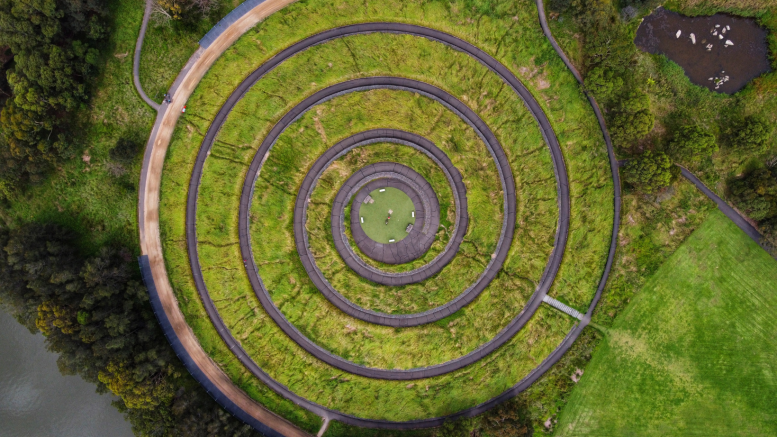Imagine a world where water never becomes “waste.”
Where every drop is reused.
Where nutrients don’t go down the drain —
but return to the soil.
Where wastewater isn’t a liability…
but a renewable resource that generates energy, fertilizer, and clean water.
Today on Mobilized News, we’re flipping the script on water systems —
because the future isn’t about extracting more from rivers and aquifers…
it’s about closing the loops that nature already perfected.
The Problem: A Linear Water System That Treats Life as Waste
Right now, most cities treat water in one direction:
Use → Dump → Treat → Discharge.
This system wastes:
- Water
- Nutrients
- Energy
- Organic matter
- Money
And creates:
- Water scarcity
- Nutrient pollution
- Algal blooms
- Toxic sludge
- High energy bills
- Lost agricultural fertility
But nature doesn’t waste water —
or nutrients.
And communities are rediscovering that neither should we.
The Flip — Water Circularity: Every Drop, Every Nutrient Back in the Loop
Circular water systems transform:
- “Wastewater” into clean water
- “Sewage” into fertilizer
- “Organic waste” into biogas
- “Greywater” into irrigation
- “Sludge” into compost
Instead of treatment plants, cities build resource recovery hubs.
Let’s see how this works around the world.
Real Examples — Water Circularity & Nutrient Recovery in Action
Example 1: Singapore’s NEWater — Closing the Urban Water Loop
Singapore purifies wastewater into ultra-clean drinking water using:
- Membrane filtration
- Reverse osmosis
- UV disinfection
NEWater covers up to 40% of national water needs —
a global model for circular water.
Example 2: Biogas from Wastewater — Denmark, Germany, South Africa
Wastewater plants digest organic matter to produce biogas, powering:
- The treatment plant
- City buses
- District heating networks
Copenhagen’s plant produces more energy than it consumes —
a net energy producer.
Nutrient Recovery from Urine — Sweden & Kenya
Systems in Sweden, Nairobi, and Cape Town separate urine to recover:
- Nitrogen
- Phosphorus
- Potassium
These nutrients become fertilizer pellets, strengthening local farming while reducing pollution.
Example 4: Greywater Recycling in California & Australia
Homes and buildings reuse lightly used water from:
- Showers
- Sinks
- Laundry
Greywater irrigates gardens and landscapes, cutting water use by 30–50%.
Constructed Wetlands — India, Mexico, U.S.
Communities use natural wetlands to clean water by:
- Microbial digestion
- Plant uptake
- Soil filtration
Wetlands restore biodiversity while producing clean water.
Circular Agriculture Loops — China & Netherlands
Treated wastewater irrigates crops, while nutrients become:
- Soil amendments
- Compost
- Biofertilizers
Food → nutrients → soil → food.
A closed agricultural loop.
Example 7: Resource Recovery Plants — Amsterdam & Vancouver
Cities extract:
- Cellulose from toilet paper (used for asphalt and bioplastics)
- Bioplastics from bacteria (PHA from wastewater)
- Phosphorus from sludge
- Heat from sewer pipes
Wastewater becomes a factory of materials.
Why Water Circularity Matters
Climate Resilience
Circular water systems protect communities from drought and rising heat.
Water Security
Less dependence on rivers, reservoirs, and rainfall.
Soil & Food Health
Recovered nutrients restore fertility without synthetic fertilizers.
Lower Costs
Energy generation + nutrient recovery = cheaper operations.
♻️ Environmental Protection
Less nutrient runoff → cleaner rivers, cleaner coastlines.
Community Prosperity
Local biogas, compost, and water reuse support local businesses and farms.
What Communities Can Do Now
1. Launch greywater reuse programs.
Neighborhood-scale irrigation systems reduce demand and bills.
2. Develop community biogas digesters.
Turn organic waste into cooking gas and electricity.
3. Create nutrient recovery systems in schools and community centers.
Urine-diverting toilets + composting = free fertilizer + education.
4. Build local constructed wetlands.
Beautiful public spaces that treat water naturally.
5. Switch municipal wastewater plants to “resource recovery” plants.
Capture heat, energy, nutrients, and water.
6. Encourage industries to reuse process water.
Factories recirculate instead of discharge.
7. Support city procurement of biofertilizers and reclaimed water.
Create local circular markets.
The Big Shift
Water is not scarce —
linear systems make it scarce.
Nutrients are not waste —
linear systems throw them away.
Circular water systems flip the script from:
Extract → Pollute → Treat → Discharge
to
Recover → Reuse → Regenerate → Circulate
This is how we create climate-resilient cities,
fertile farms,
healthier rivers,
and communities that don’t waste a single drop.
Because the future isn’t about tapping new water sources —
it’s about closing the loops that sustain life.
That’s how we flip the script.
